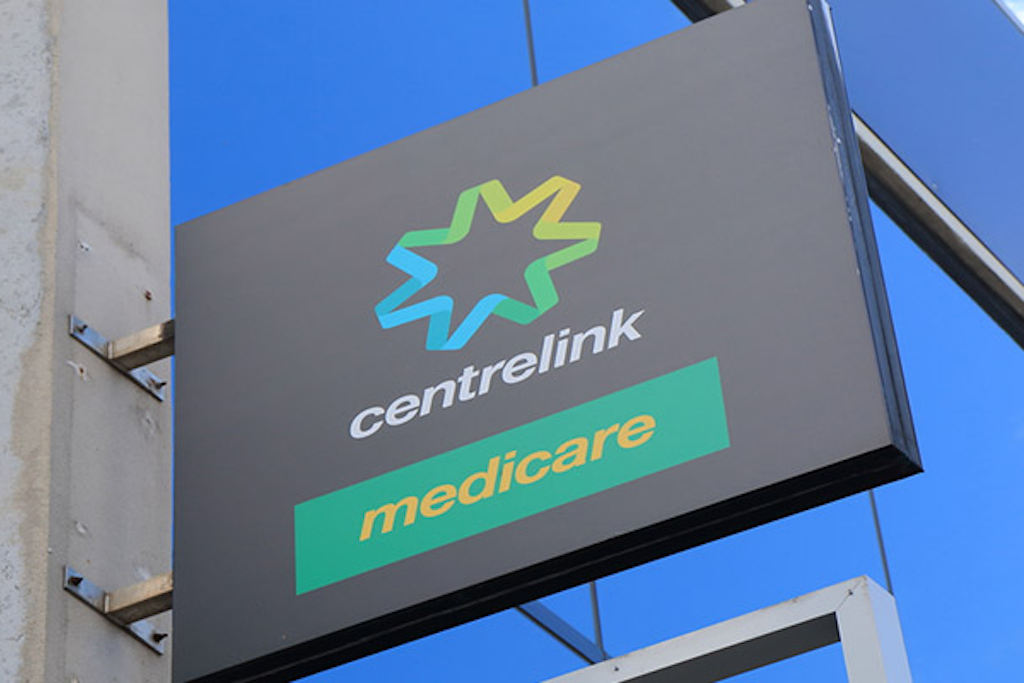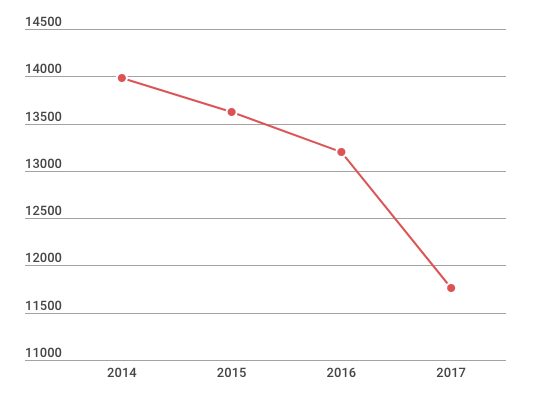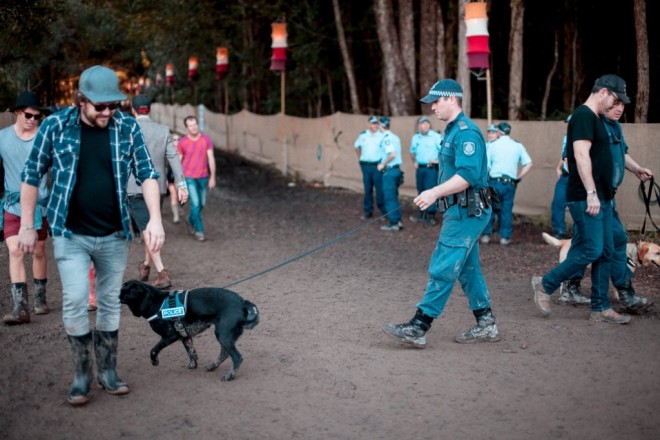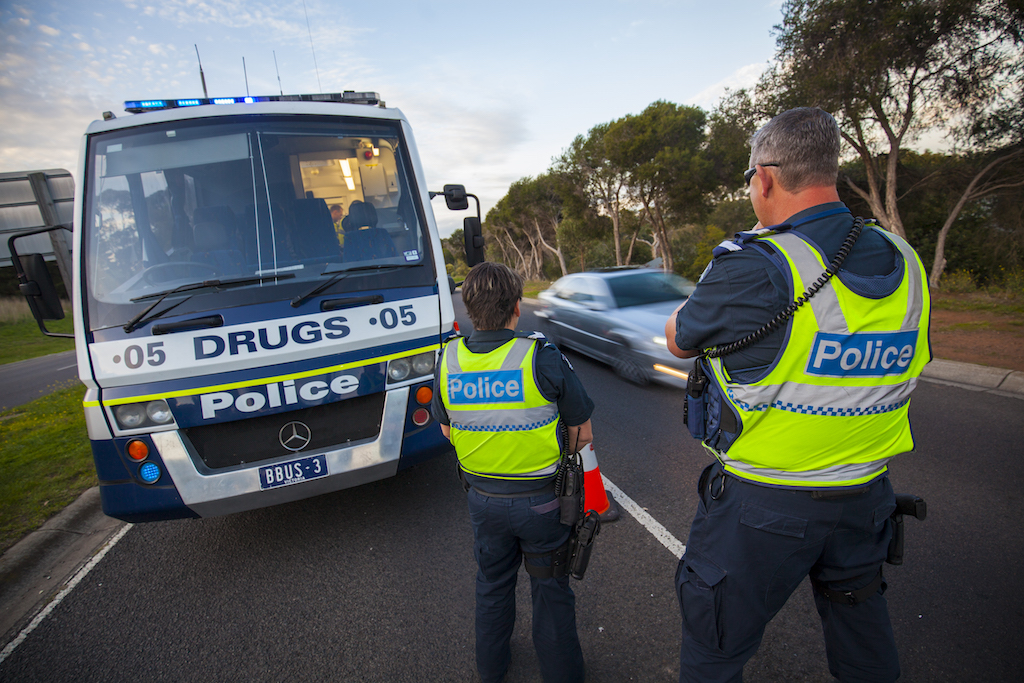Here’s Why Drug Testing Welfare Recipients In Western Sydney Doesn’t Make Sense
Why did the government target Sydney's western suburbs?

Last week the federal government announced that Canterbury-Bankstown in Sydney’s southwest would be the first place that welfare recipients would be subjected to random drug tests from early next year.
Medical experts have warned against the government’s new policy, arguing that it would further marginalise vulnerable Australians. Laws allowing the tests are yet to pass parliament, but the social services minister, Christian Porter, is keen to talk up the drug tests anyway.
In justifying the decision to trial the policy in the Canterbury-Bankstown area, Porter cited figures suggesting a big increase in both welfare recipients and drug hospitalisations in the area. But a closer look at the numbers suggests the government isn’t telling the full story.
The number of welfare recipients in Canterbury-Bankstown is actually declining at a pretty rapid rate. So what’s really going?
The Numbers Don’t Add Up
According to Porter the government landed on Canterbury-Bankstown because it was looking for “a high volume catchment area, where on a quarterly basis there are large volumes of people coming into the unemployment system and onto the Newstart payment”.
The government cited numbers showing 5,642 new people had come onto job seeking payments that year in the area.
That number seems pretty high, right? But devoid of any context in terms of how many people come on and off of job seeking payments in a year, the total number of welfare recipients in the area, or how big that number is in comparison to the rest of the country, it’s pretty meaningless..
So let’s do what the government didn’t do and put it into context.
The government conveniently publishes quarterly data on how many people receive Centrelink payments in each council area in Australia.
Turns out when you look at how many people are receiving the two welfare payments in question (Newstart and Youth Allowance Other), the numbers have been going down for some time in the Canterbury-Bankstown area. And not only that, they have been declining fast. Faster than in greater Sydney and way faster than they have been nationwide.

The number of people in Canterbury-Bankstown receiving job seeker payments has declined since 2014.
Between March 2014 and March 2017, the number of people receiving job seeker payments decreased by 16 percent in Canterbury-Bankstown. During that same period of time across greater Sydney, that number only declined by 12 percent. Nationally, that number actually went up, by 5 percent.
So even if the government’s figure of 5,642 new recipients is correct, it masks the fact that the number of welfare recipients in Canterbury-Bankstown is going down, quickly. Junkee contacted Porter’s office but didn’t receive a reply.
But Wait, There’s More!
In another document the government gave to the media to explain its decision, it trotted out this table:

That shows the number of welfare recipients exempted from trying to find work due to drug dependency issues. Again, that 162.5 percent sounds pretty big. But lets take a closer look.
According to the same document, 16,157 job seekers across the country were granted this exemption in 2016-2017. That means the 21 people in the Canterbury-Bankstown area granted the exemption represent just 0.13 percent of the national number. This is particularly striking when you consider that Canterbury-Bankstown makes up 1.43 percent of Australia’s population. Once again, the government’s math doesn’t quite make sense. Canterbury-Bankstown is actually underrepresented in drug-related, temporary incapacity exemptions when you consider its size.
There is also a final number that merits digging into. Again, from the same document:
“Between 2009-10 and 2015-16, the rate of methamphetamine related hospitalisations per 100,000 people in the South Western Sydney Local Health District has increased by 2,153 percent, from 6.0 to 123.4.”
But even though that’s a hefty increase, the rate of methamphetamine related hospitalisations is still significantly higher in many others part of Sydney and NSW. In Sydney’s CBD the rate is at 135 hospitalisations per 100,000 people, an increase of 900 percent since 2009-10.
On the Central Coast, its 132.5 per 100,000.
In Hunter-New England, its 148.1 per 100,00
In the Illawarra-Shoalhaven area it’s a staggering 154.6 per 100,000.
Yet the government landed on Canterbury-Bankstown to trial the tough new drug testing regime. It smells a lot like a set up.
So Why Target Sydney’s West?
The multicultural Canterbury-Bankstown area has long been synonymous with ‘Western Sydney’. A useful code for many on Sydney’s whiter, Liberal voting coastline which denotes that the area is not only ‘far away’, but also defined by poverty, crime, drug addiction and ‘being rough’. In Sydney parlance, Canterbury-Bankstown is the West, and the West is where the ‘problems’ are.
As these numbers show, this is not necessarily the case. But because of these narratives, choosing Canterbury-Bankstown ‘feels right’ for the rest of Sydney, regardless of the facts. By choosing the area, the government has managed to look like it is solving a problem but without losing votes, face or money in the process.
The truth behind the government’s motives for choosing Canterbury-Bankstown might be found one of the other reasons Porter listed for why the area was chosen: it has enough drug and alcohol support services to support new people seeking treatment. Or, in other words, the government doesn’t have to invest in any new drug and alcohol treatment services to roll out its program.
If that’s the case the government should at least be honest with the public instead of spinning us rubbery figures that don’t stack up.
—
Samantha Jonscher is a freelance writer based in Sydney.


